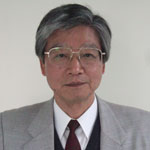
STUDY ON TIME-DEPENDENT BEHAVIOR OF REINFORCED CONCRETE MEMBERS

Dr. Ryoichi SATO (Hiroshima University)
Dr. Sato developed a deformation analysis method for determining the long-term flexural deflection of reinforced concrete members in which the bond stress-slip curve and its time-dependence are considered in addition to creep and shrinkage of concrete, and demonstrated its applicability by comparing with experimental results. Further, he succeeded in quantitatively evaluating the effect of early-age dimensional change of high-strength concrete on the flexural deformation and crack width of reinforced concrete members by focusing on change in length of reinforcing bar after loading. This concept is considered in the equation for crack widths given in the JSCE Standard Specifications for Concrete Structures, so the results are also helpful in practice.
Dr. Sato clarified, for the first time in the world, that concrete shrinkage reduces the shear capacity of reinforced concrete members. His research demolishes the conventional understanding that just only cracks should be considered in the shrinkage problem and his proposed concept of equivalent tensile reinforcement ratio considering the effect of shrinkage on shear capacity has been verified by the results. The reduction in shear capacity due to shrinkage has been included as a gheads-uph in the JSCE Standard Specifications for Concrete Structures.
The JSCE recognizes these achievements as worthy of the Yoshida Award for Research Accomplishment.
Dr. Sato has substantiated the effect of material properties such as creep, autogenous shrinkage and drying shrinkage on the behavior of reinforced concrete members over time, including the occurrence and development of cracks, long-term increase in flexural deflection, and reduction in shear capacity. His pioneering results clarify the coupling between the material and structure scales.